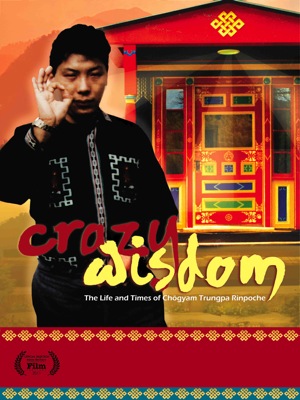Of Crazy Wisdom & Spiritual Guides
28 Feb
Chogyam Trungpa conjures up a lot of interesting imagery besides being a Dharma teacher. He’s married, he’s an eccentric, philosopher, womanizer, drunkard, artist… and the list goes on. Whatever he is, he’s definitely the product of his time. We must come understand him through his audience first. His very first circle of students came to him in a drug-out haze, clutching carved our peace signs after going to bed with several women with a zeal that would have shocked quite a few people today and in their spare time, looking for strange answers in strange Far East religion and philosophies. In other words, his audience were the baby-boomers – children of world war 2 that were utterly disillusioned with war, aggression and desperately seeking answers beyond the ordinary life they were living.
In his teachings, Chogyam Trungpa was phenomenal in his methods and delivery. Ofter favoring the delivery of the teachings in a way that would be accessible to these people – which favored the intellectual vocabulary that everybody knew but barely understood. He blew the minds of his students when he exposed the truth with words that contained ancient Buddhist techniques and Buddhist ideas that worked. Despite his seemingly reckless behavior on the personal side, he still managed to maintain tremendous amounts of loyal students and friends. That shows a lot of who he is and what he is trying to achieve even on the personal level with his students and friends. He coined this phrase Crazy Wisdom, a heightened state of mind filled with wisdom but with actions that blew the minds of ordinary folks that it would seemed like just madness. There’s almost no way to tell at times for the casual observer except for the results of these actions. Chogyam Trungpa was like that and the biopic film of his life seemed at times to have been deliberately toned down to explain away the eccentricities of his personal life.
There were a few screenings in Kechara and I was asked to give explanations on this film to the audience so crucial moments sink in and fleeting important conversations were remembered. The film is a basically a series of interviews with senior students interspersed with rare and powerful footages and clips of his life and teachings. I summarize that the film gives the general audience a comparison between Dharma teachers like Chogyam Trungpa and Tsem Rinpoche. The comparison I presented reveals similarities and so people can understand Tsem Rinpoche better and have fewer doubts. Chogyam Trungpa and Tsem Rinpoche are utterly two very different teachers but the guiding principle, the humane qualities of compassion and the skill in which they present the Dharma are identical. Their teachings depended upon the receptivity of the audience and it took years for both to hone it so the message becomes clear and for people to readily embrace the message. In essence, through viewing Chogyam Trungpa, the audience also gets closer to Tsem Rinpoche.
The other major part is the inspiring students themselves, we saw utter devotion with some students who have given up their jobs and homes to live with him. It was something we would never see happening here but no matter. There are other ways of devotion. There is also a good cross-section of male and female students who were a lot older and who are already Dharma teachers in their golden years and speaking with a sparkle in their eyes. That’s what Tsem Rinpoche himself felt was moving and that itself should be an inspiration for us, spiritual aspirants. It also gives us strength and courage not to give up as others have done it and will continue to do it for the rest of their lives. In the end, the movie ends with the funeral of the late Chogyam Trungpa like a final teaching – impermanence and the letting go of his students hands. The inevitable event in everybody’s life and a most powerful teaching of them all. Tsem Rinpoche often reminds us of our mortality, an attempt to wake us from complacency.






No comments yet